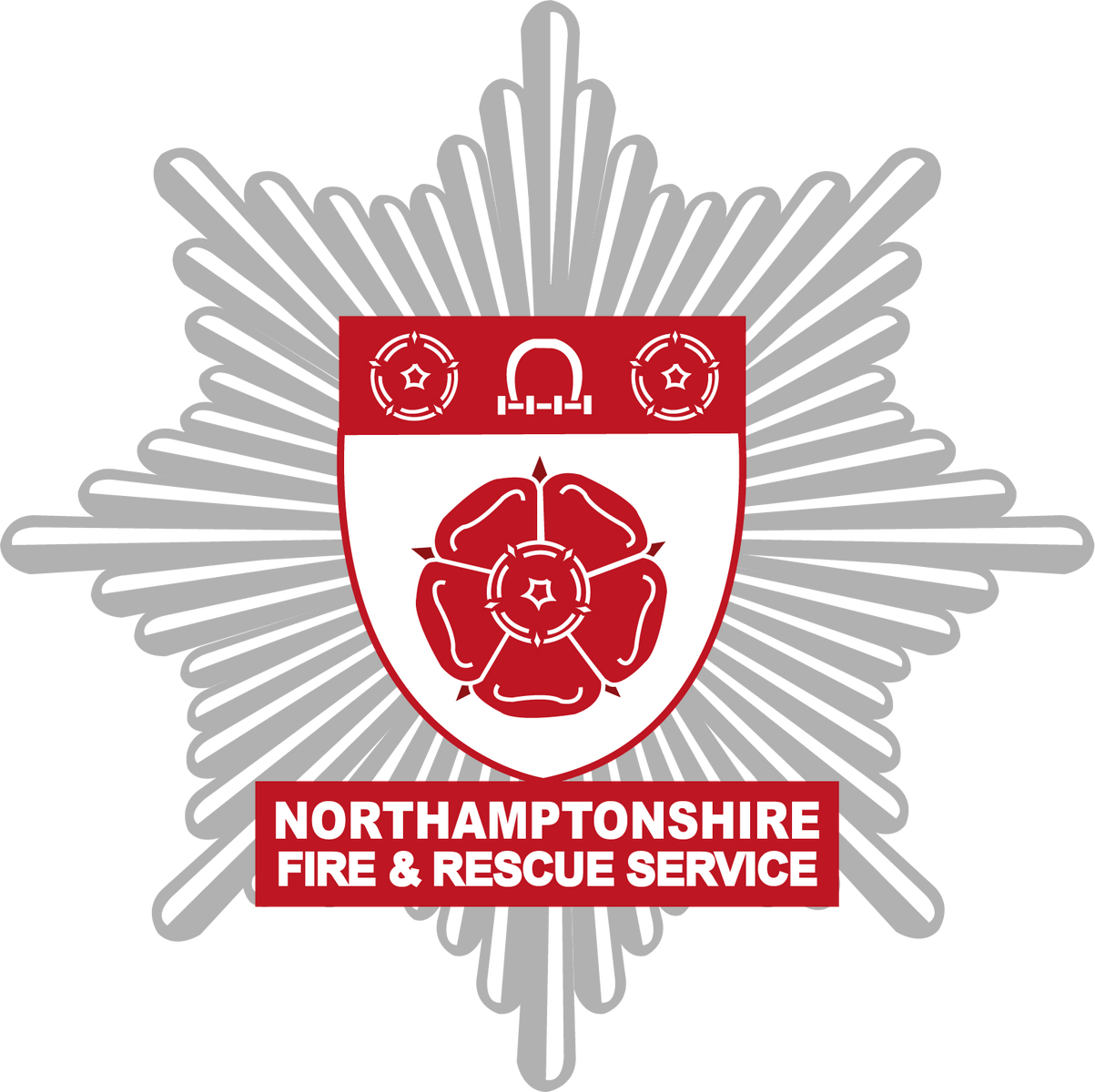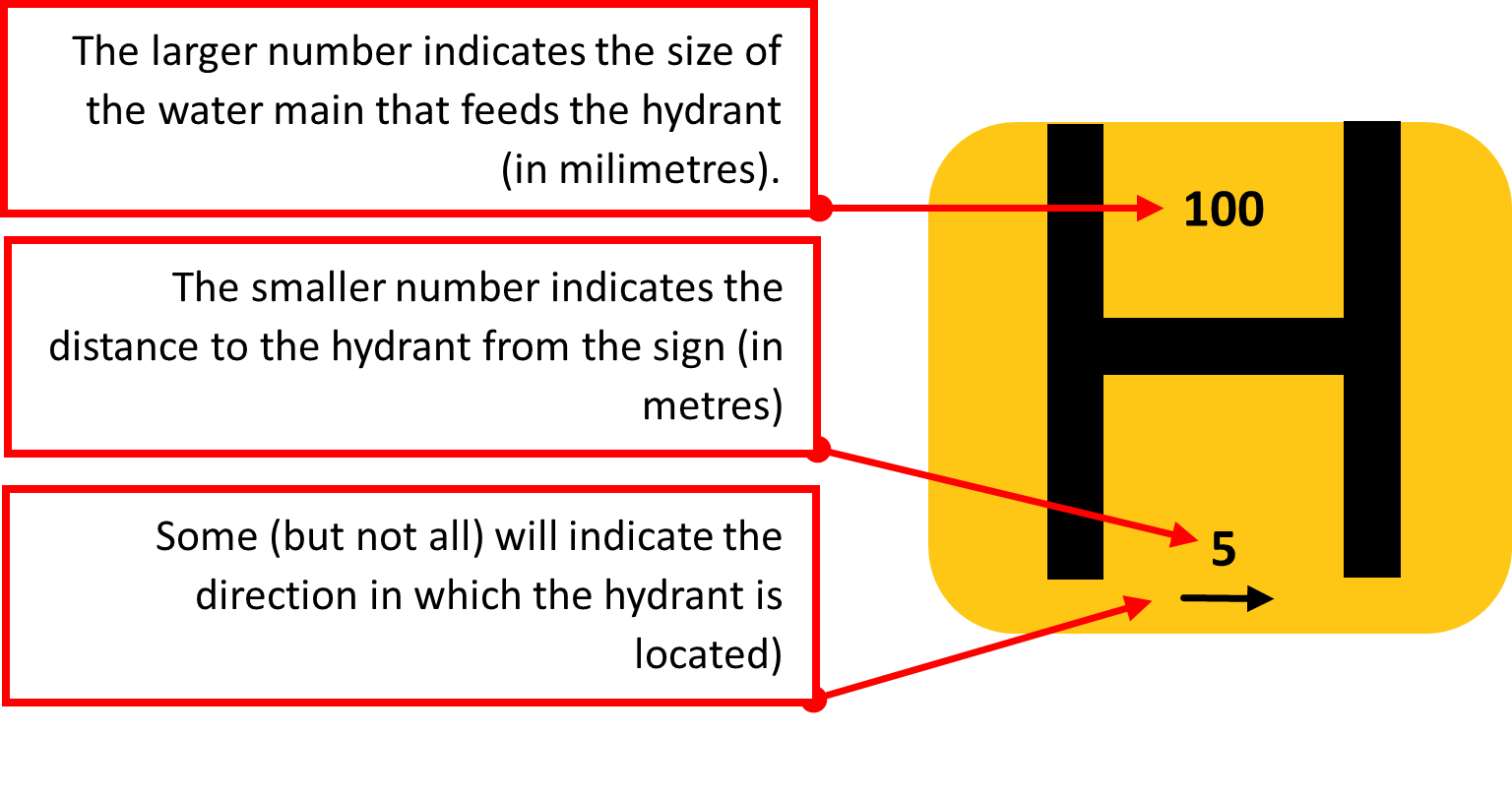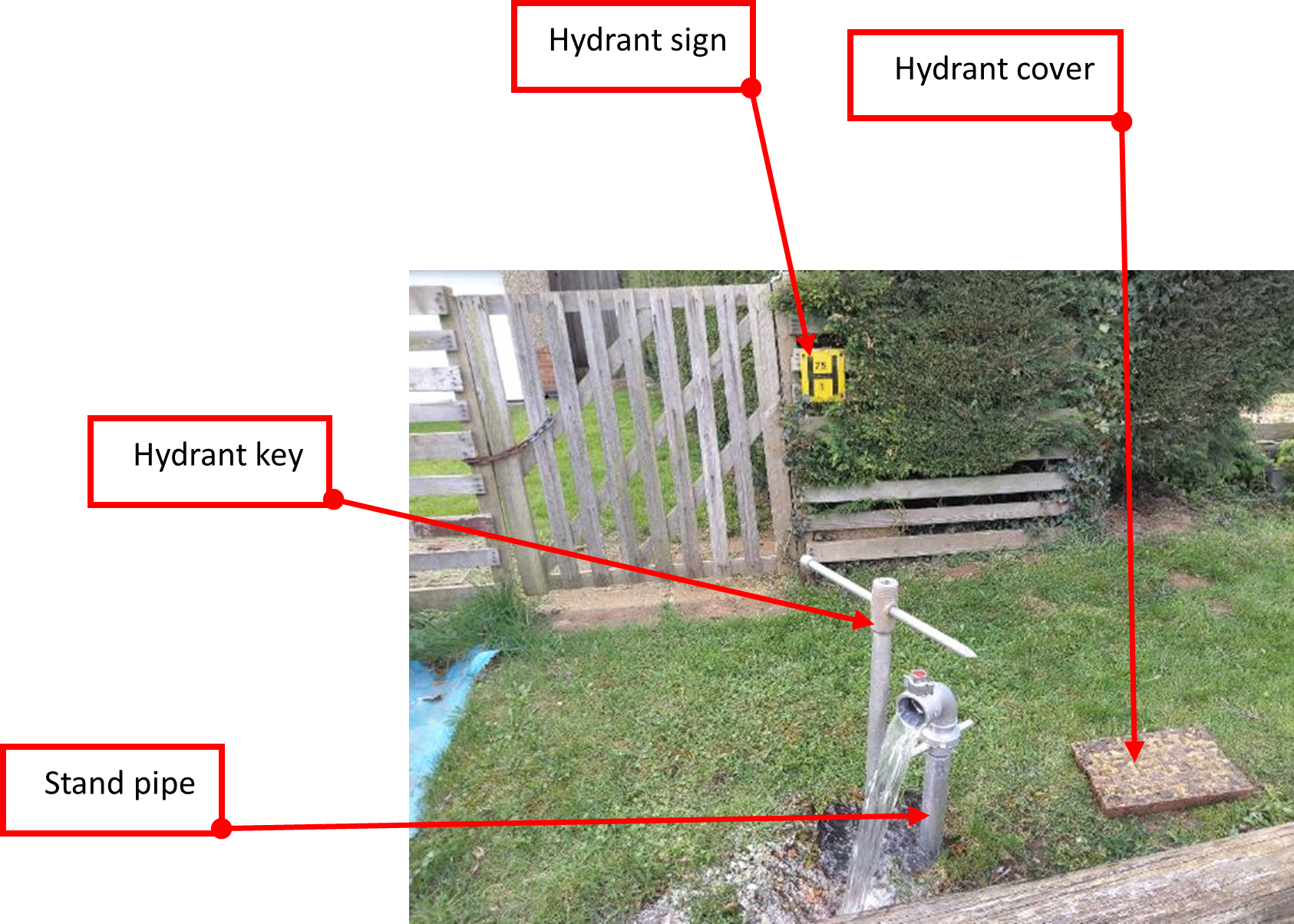Hydrants
A person commits an offence if they damage or obstruct a fire hydrant (Fire & Rescue Services Act, Section 42).
Have you seen a yellow 'H' sign in the street? These signs indicate that a hydrant is nearby.
A fire hydrant is a point we can get access to and connect into a water supply. We use these to access the water main when we need to refill our fire engines or access an additional water supply during an incident.
A hydrant is a vital component of active fire fighting and we rely on visible, bright yellow hydrant signs to navigate our firefighters to the nearest hydrant, we should not rely on navigation systems alone.
We may need to access a hydrant at any time, please be sure to keep hydrant signs and hydrants visible and accessible!
Below you will see a the difference between a visible hydrant sign and an obstructed hydrant sign.
Have you wondered what the numbers on hydrant signs mean?
Take a look at our infographic below for help in deciphering hydrant signs.
Please read the sections below which provide further information.
The first legislative requirement to fix fire plugs (fire hydrants) was made in 1847 with the passing of the Waterworks Clauses Act 1847. Ensuing legislation culminated in the Water Industry Act 1991.
There is a duty under the current Fire and Rescue Services Act 2004 that the Service secure the provision of water supplies for firefighting purposes. This means that water companies provide the necessary water supply, but the Fire and Rescue Service is responsible for determining the location of hydrants and for their subsequent testing, repair and maintenance.
When a new development within the county is planned, the Fire and Rescue Service determines the risk and recommends the number and position of fire hydrants required to the water authority. Each hydrant is strategically placed to ensure the minimum provision is made, whilst delivering the optimum supply of fire fighting water from a mains system.
Hydrants shall be subject to a periodic testing and inspection at intervals to be determined by the Fire and Rescue Service, taking into account relevant information such as the location and likely use of the hydrant.
An inspection of a fire hydrant looks at the hydrant pit, frame, cover, the surface surrounding the hydrant and the frost valve, if fitted. The hydrant indicator plate will also be checked. All joints will be visually inspected for any signs of leakage.
The current national position is that hydrant installations are inspected and tested using the procedure detailed in the Home Office Technical Bulletin 1/1994 (Section 14)
Note: Where it is necessary to conduct initial or regular tests on hydrants, it is important to arrange this with the appropriate water authority.
Tests are carried out on a regular basis. The interval of inspection is left to individual fire authorities to determine. The agreed practice is that this will normally be carried out on an annual basis.
– The reason why hydrant signs are yellow are so crews have a higher visibility of them when attending incidents.
– Hydrant covers on the road, and may be parked over, may be spray-painted yellow to increase visibility for our crews.
– Within Northamptonshire we have just over 15,500 hydrants and are continually adding to this.
– Firefighters and Hydrant Technicians go out everyday to ensure that hydrants are in working order.
– In the UK, Fire Hydrants are ‘hidden’ in a pit, underground and accessed using a ‘standpipe’ which can be seen below.
– Submit our online form should you notice any damage or problems with a fire hydrant sign or fire hydrant as soon as possible.
– Do not paint over the colour yellow on the fire hydrant signs, or the hydrant covers. These are vital in ensuring our crews can navigate to the nearest hydrant point, to get water in an emergency (we cannot always rely on navigation systems).
– Be mindful of vegetation/flowerbeds, keep a neat area around any signs/covers
– Contact us as soon as possible if you are thinking of moving a hydrant sign. Please do not do this without liaising with us.
It is illegal to use a fire hydrant to obtain water for anything other than fire fighting unless you are authorised to do so by the water authority or any other person to whom the hydrant belongs.
Unauthorised assess to the hydrant is not allowed. Persons found to be using fire hydrants without the appropriate authorisation are liable to prosecution.
In the event of fire, it can be paramount that firefighters have access to water supplies quickly. Obstruction of fire hydrants, particularly inconsiderate parking could place the lives of you, your family and your neighbours at risk.
A person commits an offence if they damage or obstruct a fire hydrant and will be liable on summary conviction to a fine not exceeding £500 (Fire & Rescue Services Act, Section 42).
One of our duties is to consult on the fire safety aspects of any building control application, assessing every plan which is submitted to the county’s building control offices to make sure that each one meets the fire safety requirements of the Building Regulations.
We are consulted by the building control bodies as part of their wider assessment of applications against the Building Regulations. For questions regarding Building Regulations’ compliance you should contact your building control officer in the first instance.
Guidance
The main piece of guidance we use to assess whether proposed applications adhere to the Building Regulations is the Approved Document B which is helpful for individual buildings.
We have also produced our Pre-Application Guidance for Developers, which provides advice and guidance for domestic and commercial property developments and includes key information on access requirements for the Fire Service and firefighting water supply requirements.
If you are seeking information as to where a nearest hydrant is located (this could be for insurance purposes) please email our Water Officer at waterofficer@northantsfire.gov.uk











 Fire Risk Assessment (worked example for House in Multiple Occupation (HMO)) (PDF 389KB)
Fire Risk Assessment (worked example for House in Multiple Occupation (HMO)) (PDF 389KB)
